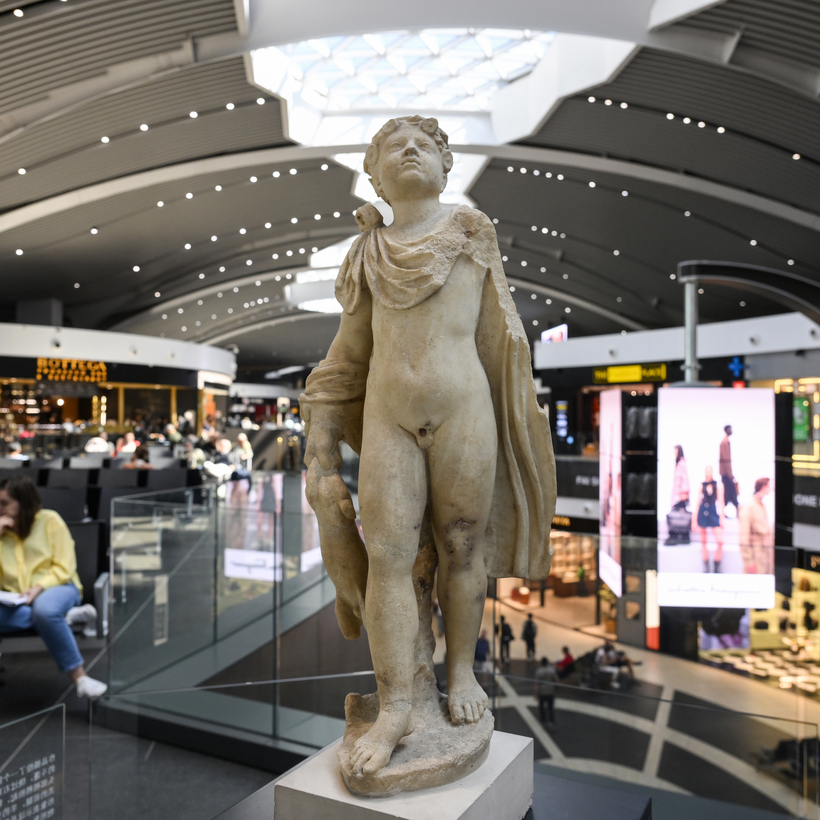When visitors to Rome land at Fiumicino, the city’s main airport, they may interpret its efficiency and general pleasantness as a taste of what’s to come during their vacation. That would be a mistake.
The newly renovated Leonardo da Vinci airport, called Fiumicino (FCO) for the cozy coastal town it inhabits, has everything Rome lacks—civility, cleanliness, cutting-edge technology, and a functioning sewage system.
The almost impeccable gateway of FCO leads to a city in disarray, plagued by centuries-old problems that have worsened in recent years, from garbage collection (or a lack thereof) to road safety and the abysmal state of its public transportation. Landing in Fiumicino and traveling to Rome is a reminder that sometimes invitations are better than parties.

In the past decade, as Rome was spiraling further into its own decay, Fiumicino has consistently improved. For the sixth year in a row, Airports Council International named it the best airport serving more than 40 million passengers per year in Europe, based on departures-and-arrivals surveys. In January, the U.K.-based consultancy Skytrax included Fiumicino in the exclusive club of five-star airports, making it the second European airport (after Munich) to join the group. In the 2023 World Airport Awards, FCO was ranked 13th, surpassing London Heathrow, Frankfurt, Amsterdam, Copenhagen, and Dubai.
Inaugurated in 1961, Fiumicino has not always followed an entirely upward trajectory. It was targeted in two terrorist attacks and damaged by a fire that partially destroyed a terminal in 2015.
Landing in Fiumicino and traveling to Rome is a reminder that sometimes invitations are better than parties.
But in the last decade or so, Aeroporti di Roma (A.D.R.), the company managing Fiumicino and the smaller Ciampino airport, southeast of the city, invested roughly $2.7 billion in renovating the structure. Today, FCO resembles an unusual mix of stylish Italian design and not-so-Italian hyper-efficiency.

The check-in and preliminary screening can happen largely with only the assistance of a smartphone; skip the security line by scheduling your arrival via the airport’s app. In Terminal 1, there are no size limits for liquids in carry-ons; laptops can stay inside the bag, and there’s no need to remove your shoes.
Shopping-wise, the terminal overflows with the inevitable anthology of Italian fashion and food brands. But the most discerning travelers may find satisfaction in places like the Fabriano paper shop, in case they need a new sketchbook during their grand tour. Anxious globe-trotters worried about missing their flights may have their cappuccino from Eataly delivered by a robot directly to the gate. The robot was developed at the Innovation Hub of Fiumicino, a workspace overlooking the check-in area. In its stylish pods, entrepreneurs develop technology for the airport environment, from self-driving wheelchairs to A.I.-powered software to improve the baggage-handling process.

Works of art are ubiquitous. Terminal 1 is now home to Gian Lorenzo Bernini’s Salvator Mundi, a masterpiece of the 17th-century sculptor. While admiring some original statues from ancient Ostia lined up next to the moving walkways, I even bumped into Marco Troncone, the C.E.O. of A.D.R. Bent over to the ground, he was fixing a piston that somehow had come out of the floor, unwittingly providing the most effective ads for his company. (If the entire scene was staged to impress me, the two publicists showing me around deserve a promotion.)
In the pre-renovation era of La Guardia Airport, Joe Biden famously said that if you blindfolded someone and deposited them in the middle of the New York City airport, they would think they were “in some third-world country.”
In Fiumicino, the opposite is true. Based on their airport experience, visitors may believe they are in London, Paris, or even Milan. And the illusion continues through the impeccably smooth, 32-minute journey to the city center at Termini station on cleaner-than-average trains. The cost? Just 14 euros. That’s where the disillusionment begins.

Termini is the only intersection point of Rome’s two main subway lines. During rush hours, it turns into an immersive play that could have been based on the third canto of Dante Alighieri’s Inferno, where droves of suffering souls are forced to chase a constantly moving banner while horseflies and wasps sting their faces.
In Rome, buses have a scary tendency to catch fire. Sidewalks are dirty, parks are unkempt, and roads are dangerous—121 people were killed by car accidents in 2021, compared with 75 in London.
The citizens’ association Roma Fa Schifo—“Rome Sucks”—has been mercilessly documenting the daily horrors of Italy’s capital for years. From wild boars stealing food from shoppers to overgrown seagulls munching on rats and pigeons, there’s ample evidence of an evolving ecosystem shaped by the growing availability of garbage.

The city’s beauty is breathtaking, but the overflowing trash bins can also take your breath away. It would be almost tempting to stay in Fiumicino—in the convenient HelloSky inside the airport, or in the majestic QC Termeroma spa nearby—and tell friends that the Coliseum was just stunning, St. Peter’s Square magnificent, and the cacio e pepe a bit too salty.
In Rome, every stone speaks of a glorious, multi-layered civilization that has developed over the millennia. But every stinking corner also reminds visitors that the Visigoths sacked the city in 410 C.E.—and never really left.
Mattia Ferraresi is a Rome-based writer and the managing editor of the Italian newspaper Domani


